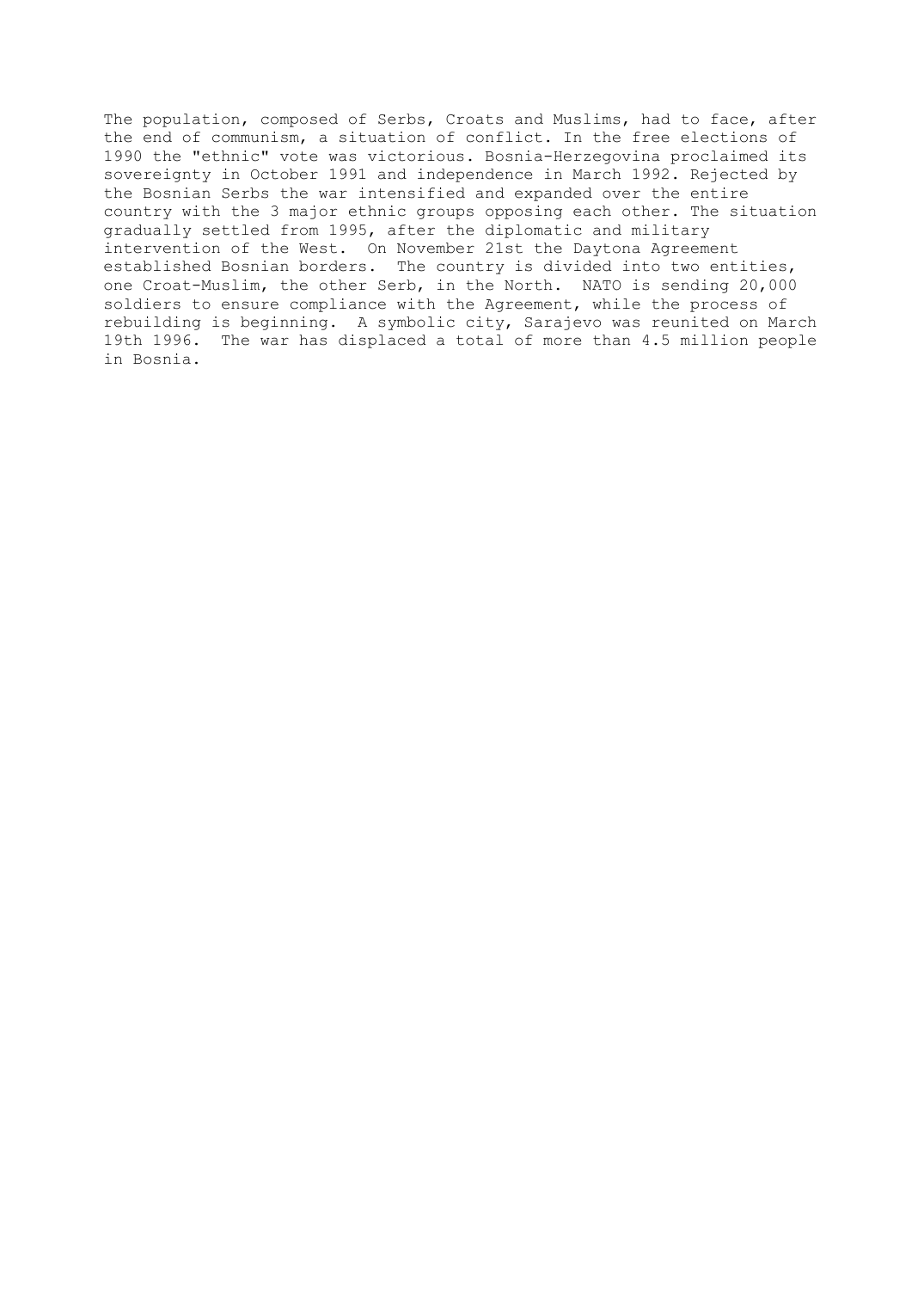The population, composed of Serbs, Croats and Muslims, had to face, afterthe end of communism, a situation of conflict.
Publié le 23/05/2020

Extrait du document
«
The population, composed of Serbs, Croats and Muslims, had to face, after
the end of communism, a situation of conflict.
In the free elections of
1990 the "ethnic" vote was victorious.
Bosnia-Herzegovina proclaimed its
sovereignty in October 1991 and independence in March 1992.
Rejected by
the Bosnian Serbs the war intensified and expanded over the entire
country with the 3 major ethnic groups opposing each other.
The situation
gradually settled from 1995, after the diplomatic and military
intervention of the West.
On November 21st the Daytona Agreement
established Bosnian borders.
The country is divided into two entities,
one Croat-Muslim, the other Serb, in the North.
NATO is sending 20,000
soldiers to ensure compliance with the Agreement, while the process of
rebuilding is beginning.
A symbolic city, Sarajevo was reunited on March
19th 1996.
The war has displaced a total of more than 4.5 million people
in Bosnia..
»
↓↓↓ APERÇU DU DOCUMENT ↓↓↓
Liens utiles
- At the end of 1994, the opening of negotiations between Ireland and theUnited Kingdom about the autonomy of Northern Ireland marked adevelopment in a situation deadlocked since 1920, the date of partitionby the British into Catholic majority Ireland and Protestant majorityNorthern Ireland.
- La population, composée de Serbes, Croates et Musulmans, dut faire face,à la fin du communisme, à une situation conflictuelle.
- HAMLET by William Shakespeare Extract 3, 2.2. 364 to the end of the play: Hamlet and the players.
- Game Theory I INTRODUCTION Game Theory, mathematical analysis of any situation involving a conflict of interest, with the intent of indicating the optimal choices that, under given conditions, will lead to a desired outcome.
- does the end justifies the means


